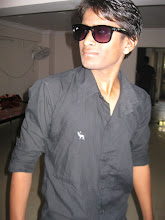UNIT-I
Overview of electronics:
Electronic components – Register, Capacitor and Inductors,
Semiconductor devices – Diodes,
Transistors (BJT and FET). Analog vs Digital electronics,
Transistor as a switch.
Integrated circuits, SSI, MSI, LSI, and VLSI circuits.
Multivibrators – astable, bistable, monostable, counters ripple and decade, edge and level triggering.
UNIT-II
Building blocks of computer system:
Basic building blocks – I/O,
Memory,
ALU and its components,
Control Unit and its functions,
Instruction –word,
Instruction and Execution cycle,
branch, skip,
jump and shift instruction,
Operation of control registers;
Controlling of arithmetic operations;
UNIT-III
Addressing techniques and registers:
Addressing techniques – Direct, Indirect, Immediate, Relative, Indexed addressing and paging.
Registers – Indexed, General purpose, Special purpose, overflow, carry, shift, scratch,
Memory Buffer register;
accumulators;
stack pointers;
floating point;
status information and buffer registers.
UNIT-IV
Memory:
Main memory, RAM, static and dynamic, ROM, EPROM, EEPROM, EAROM, Cache and Virtual memory.
UNIT- V
Interconnecting System components:
Buses,
Interfacing buses,
Bus formats – address, data and control,
Interfacing keyboard,
display,
auxiliary storage devices and printers.
I/O cards in personal computers.
Introduction to Microprocessors and Microcontrollers:
introduction to 8085 micropocesor,
examples of few instructions to understand addressing techniques.
Difference between microprocessor and microcontrollers.
Recommended Books
Andrew S. Tanenbaum , Structured Computer Organization,Printice Hall
William Stallings, Computer Organization and Architecture , Sixth Edition, Pearson

